Seven of the Best New Shrubs of 2024
Innovative new shrubs include blight-fighting boxwoods, a mock orange that reblooms, and an all-new woody plant called a “desert orchid.”
Landscapes used to be filled with shrubs that could easily reach small-tree status if not harshly pruned.
Forsythias, mock oranges, lilacs, burning bushes, PeeGee hydrangeas, Chinese fringe flowers, rose-of-sharons, and butterfly bushes are some of the old-fashioned favorites that can grow into rangy bushes of eight to 10 feet or more.
Then people began buying bigger homes on smaller lots. And aging retirees and working couples with kids both found they had less energy and time to devote to landscape-trimming duty.
The result has been an increase in demand for smaller-sized and slower-growing shrubs – ones that stay more in the three- to four-foot range.
Some shrubs are naturally more compact than others. Azaleas, potentilla, globe arborvitae, spirea, St. Johnswort, and leucothoe are examples of species that never grow much bigger than four feet tall and/or wide. These have long been popular choices for smaller yards.
However, in response to the growing demand for smaller plant choices, plant breeders have focused lately on developing more compact versions of classic but bigger species.
So-called "dwarf" varieties can come from several different techniques.
The oldest is watching for plants that turn out to be smaller than the norm for that species – akin to that one brother who is markedly shorter than the rest of the family. Like people, plants have variability both in their genetics and how they respond to environmental stresses, such as cold, light, and disease attack. When cuttings are taken from these plant exceptions, the offspring often grow with the same exceptional traits.
Sometimes growers and keen-eyed gardeners notice even more extreme exceptions or "mutations" that make a huge leap in size or other traits (i.e. an odd leaf color or a weeping growth habit). Cuttings from these often end up as the genesis of a new and unusual plant variety.
Growers also can purposely induce changes, such as by introducing a stress or by cross-pollinating flowers from two or more different plants.
Grafting is yet another way to produce dwarf varieties. That occurs when the branch of a desirable bloomer is attached to the rootstock of a variety that’s naturally smaller or slow-growing.
Finally, breeders can use genetic engineering in which they insert (or remove) genes that control the way in which a plant grows.
The many new short-and-squat shrub varieties aren’t just for maintenance-challenged gardeners. Smaller sizes make good design sense in a variety of settings.
Limited spaces are logical sites for compact plants, such as underneath windows, in narrow beds between the porch and sidewalk, and in foundation beds that are only three or four feet wide. These are places where hulking hollies or bulky burning bushes will lead to unnecessary trimming that's not ideal for the trimmer or the plants.
Compact shrubs also are useful when mixed among perennials and ornamental grasses in garden beds, when planted in front of taller shrubs or hedges in a border bed, when planted on either side of a taller specimen plant, and when used as spots of color along walks, patios, and decks.
Compact shrubs make good choices for growing in containers, too.
Keep in mind that the word "dwarf" on a label or plant name doesn’t necessarily mean the plant is little. While most dwarf shrubs grow three to four feet tall or less, a plant can qualify as "dwarf" so long as it’s smaller than the species' norm. In other words, a "dwarf" oakleaf hydrangea might still grow five or six feet tall, which is more compact than the eight-foot height that’s typical in a mature straight-species oakleaf hydrangea.
The lesson: consult labels and plant descriptions for the size information of the specific plant you're considering and use that when planning your spacing.
Interested in shrinking your plant sizes? Here are five worthy flowering shrubs for full-sun sites or those that get at least six hours of direct sun a day:
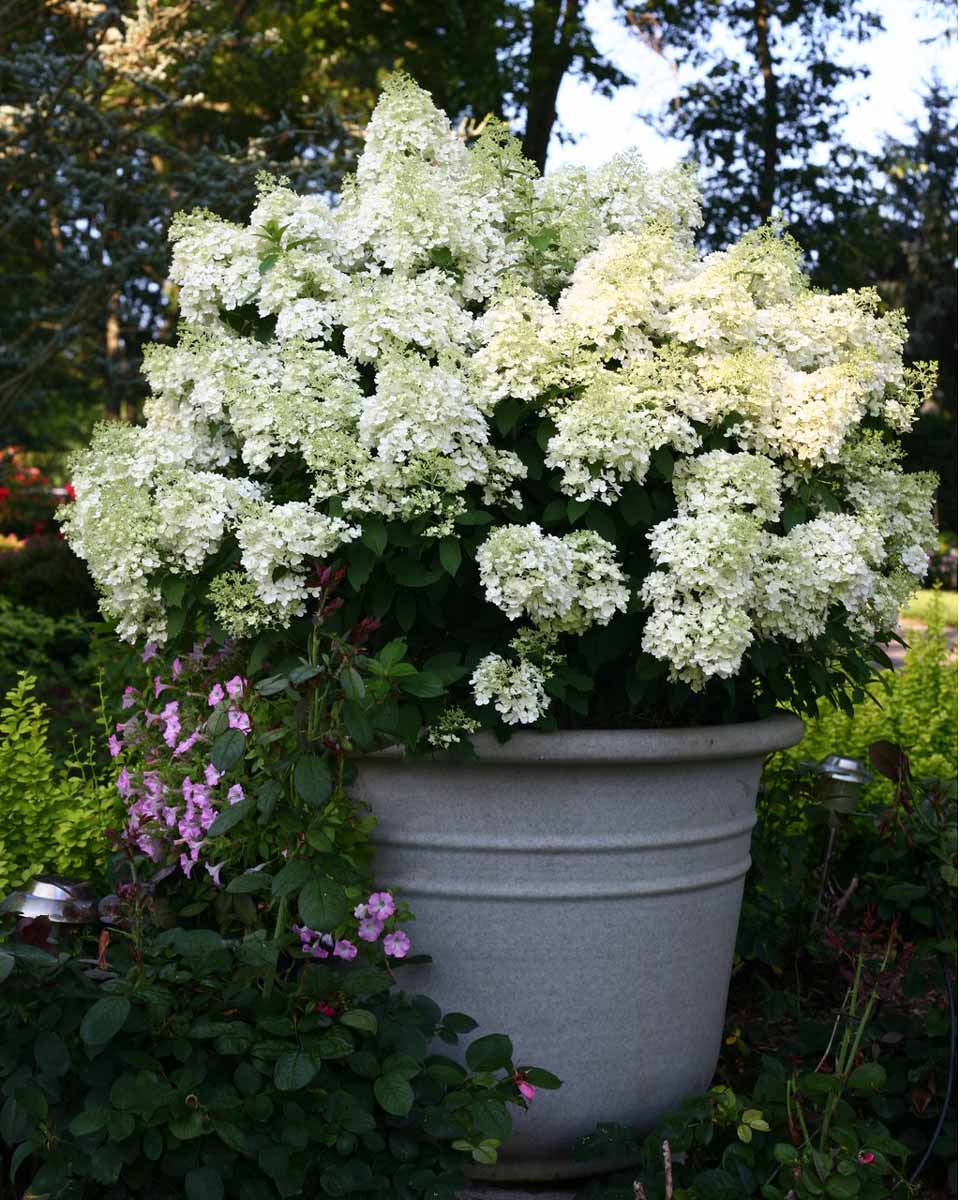
Bobo® Hydrangea. Proven Winners
These hydrangeas bloom in summer with large, cone-shaped flowers that start out white and turn pink or rose. Lots of new down-sized versions are available, including Fire Light Tidbit®, Bobo®, Early Evolution®, Little Lime®, Little Quick Fire®, Puffer Fish®, and Little Hottie®.
All of those stay in the three- to four-foot range and are winter-hardy to USDA Zones 3 through 8.
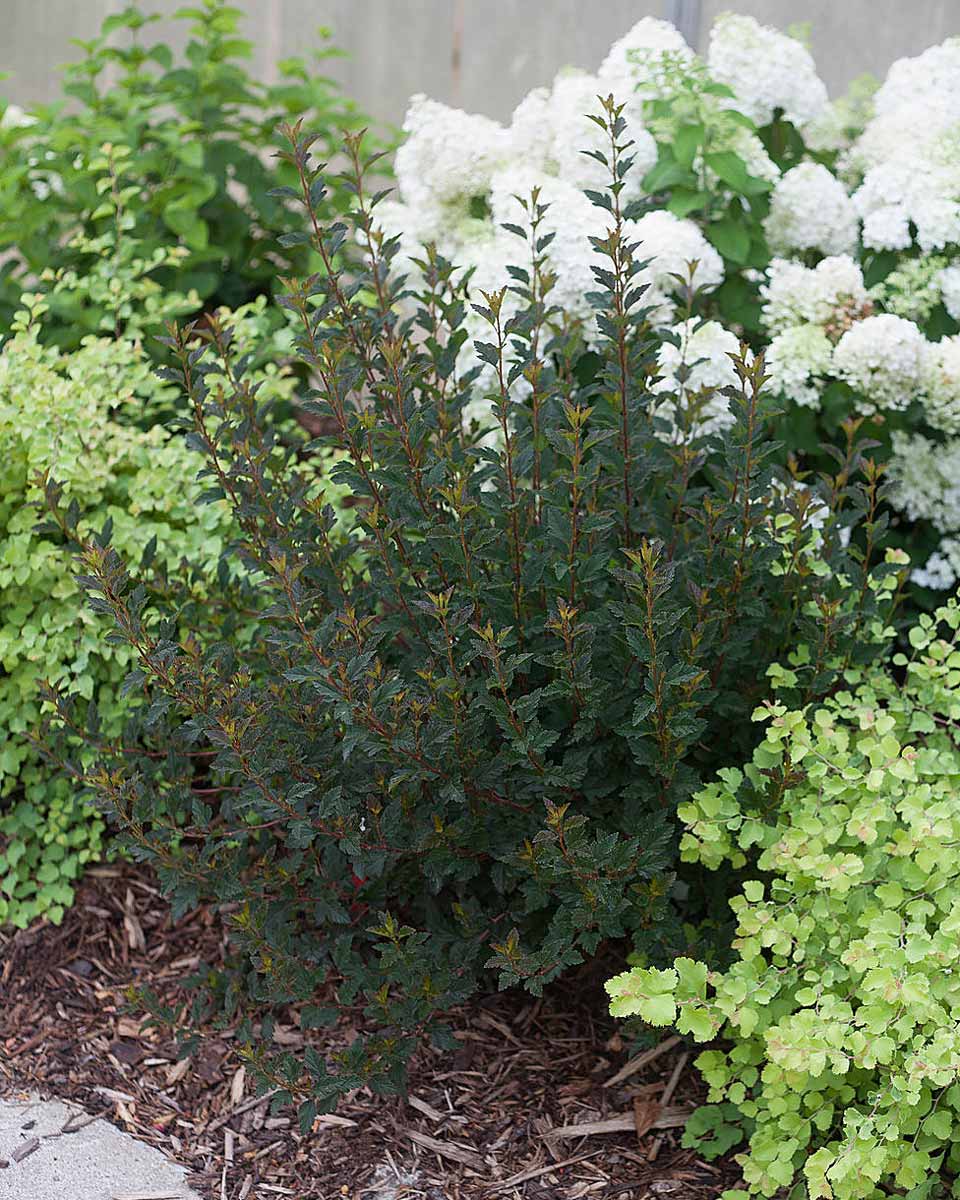
Tiny Wine® dwarf ninebark. Proven Winners
This native shrub flowers pale pink in late spring, develops brilliant fall foliage, and shows off its peeling bark in winter. Dark-leafed varieties are especially popular.
Little Joker®, Summer Wine®, Tiny Wine®, Little Devil™, and Spicy Devil® are three- to four-footers with dark leaves. Lucky Devil® is a four-footer with golden foliage. All are hardy in Zones 4 to 7 or 8.
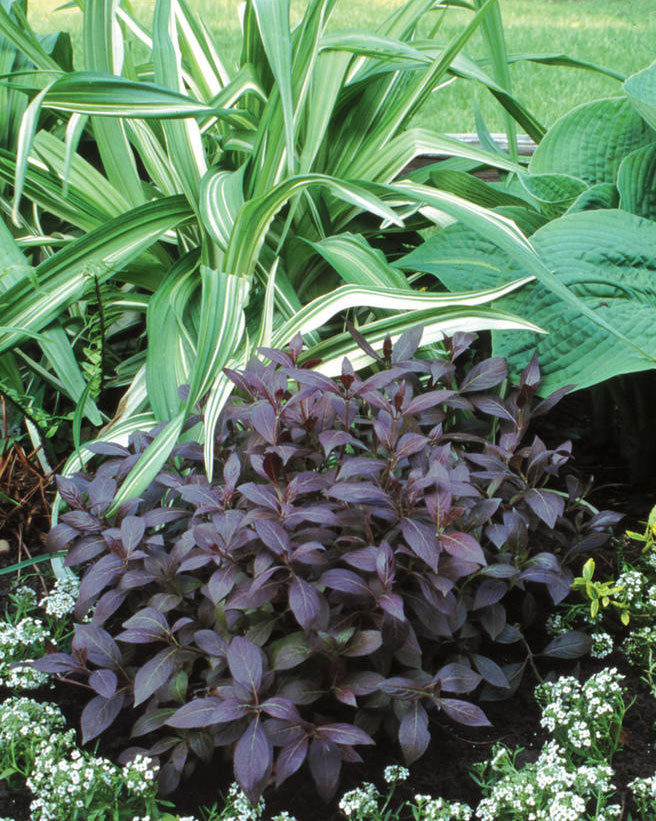
Midnight Wine® weigela. Proven Winners
Weigelas produce trumpet-shaped flowers of pink, rose, red, or white in mid to late spring.
Midnight Wine®, Shining Sensation™, Fine Wine™, and Coco Krunch® are dark-leafed, rosy-pink bloomers that grow two to three feet tall and wide. Crimson Kisses® is a green-leafed red-bloomer that grows three feet tall and wide. My Monet® and ‘Variegated Nana’ are pink-blooming three-footers with variegated foliage.
Weigelas are hardy in Zones 4-9.
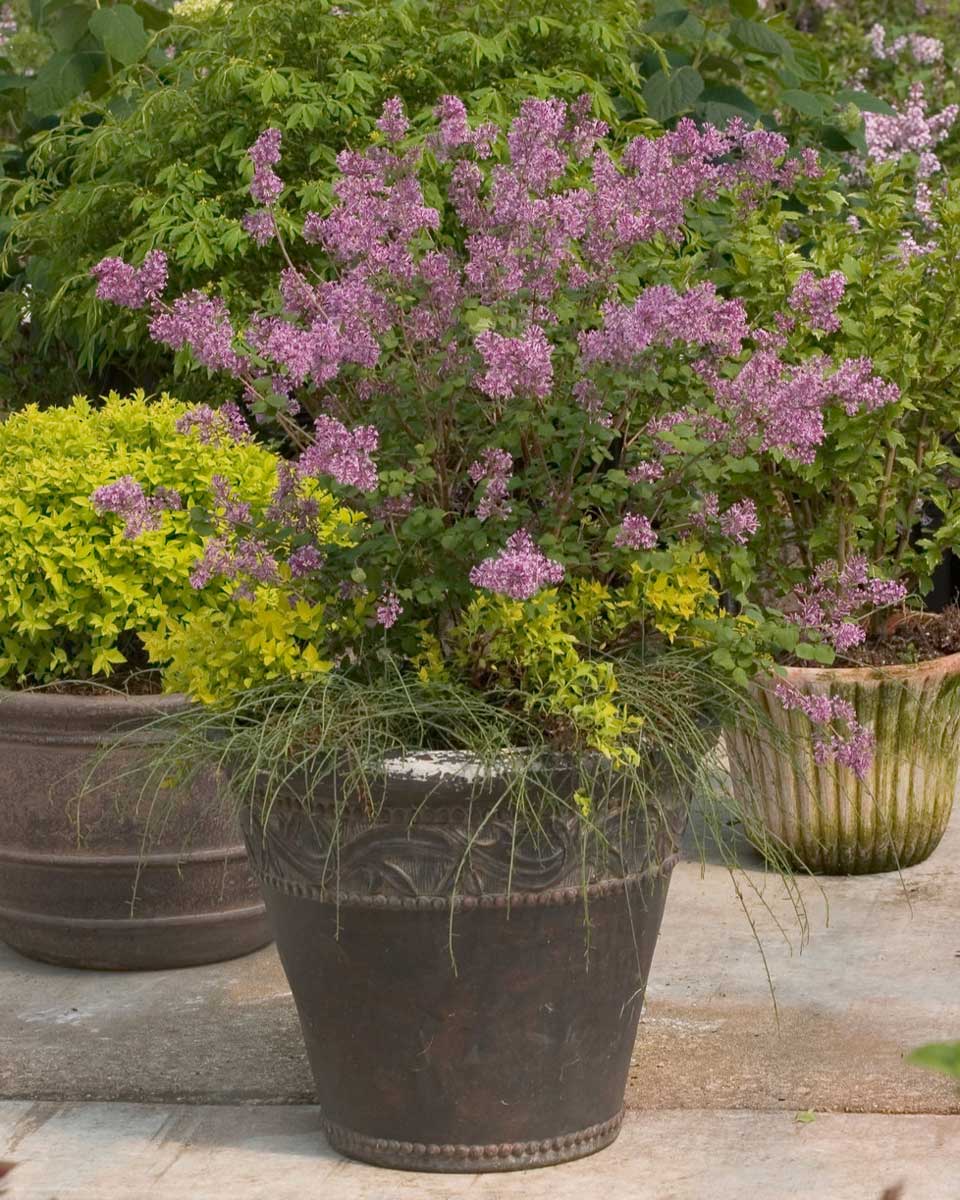
Bloomerang® dwarf lilac. Proven Winners
Lilacs flower mostly in pink or lavender in mid to late spring, and many are fragrant. A few rebloom in summer.
Dwarf Korean lilac is one of the older compact versions, while ‘Miss Kim,’ Tinkerbelle®, Pinktini™, Little Lady™, and the Bloomerang® series stay in the four- to five-foot range. Lilacs are hardy in Zones 3-8.
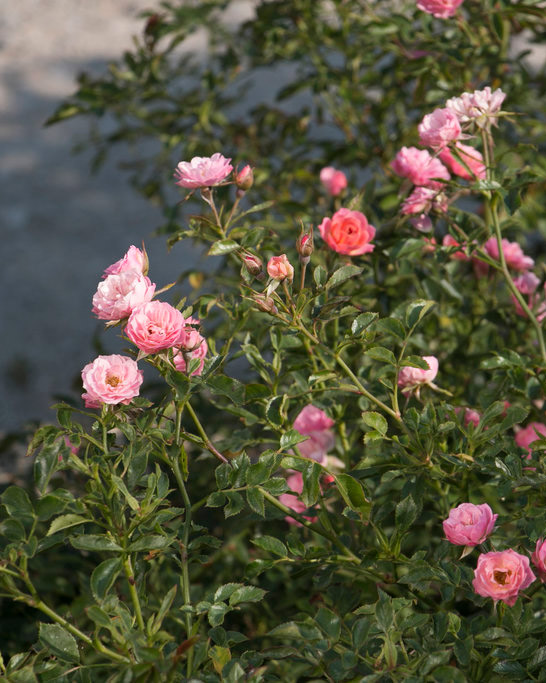
Oso Happy Petit Pink dwarf shrub rose. Proven Winners
This category of rose has smaller but more flowers and better bug- and disease-resistance than traditional hybrid tea roses.
Several recent introductions take the sizes down to about two feet tall with spreads in the two- to three-foot range. Examples are the new red-blooming Petite Knock Out®, the groundcover Drift® series, and the Oso Easy®, Easy Elegance® and Flower Carpet® series.
Shrub roses are hardy from Zones 3 or 4 to Zones 9 to 10.
Gardening in lower light? Here are five worthy shrubs (all U.S. natives) for sites in shady to partly shady sites:
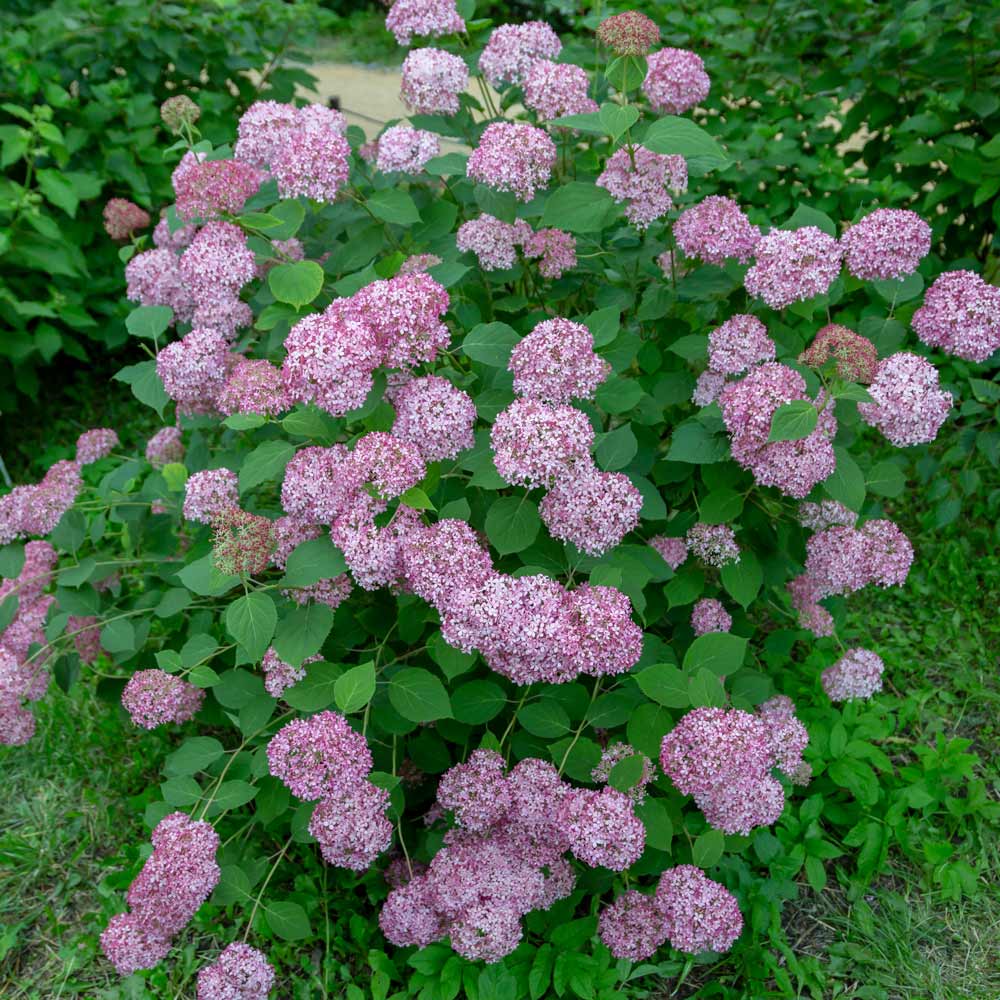
Hydrangea arborescens Invincibelle Ruby. Olga Seifutdinova / iStock / Getty Images Plus
This type of hydrangea produces large white or pink flower balls in summer.
Invincibelle Mini Mauvette®, Invincibelle Wee White®, Seaside Serenade Bar Harbor®, and Bella Anna® are among the new three- to four-foot alternatives to yesteryear’s six-foot flopper, ‘Annabelle.’
Smooth hydrangeas are hardy in Zones 3-8.
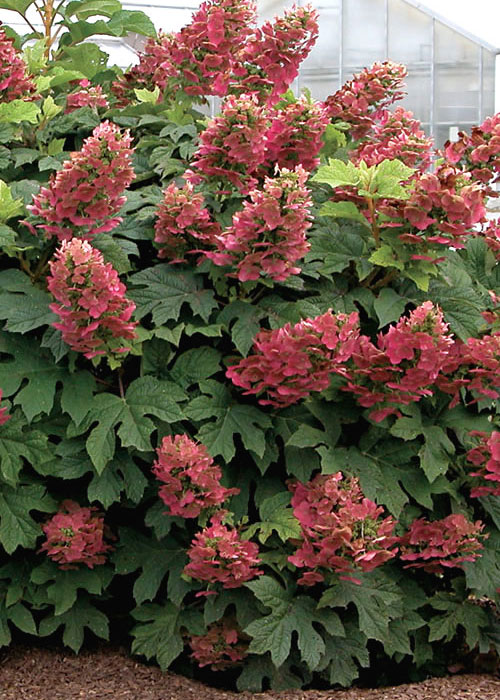
Dwarf oakleaf hydrangea 'Ruby Slippers'. Proven Winners
This hydrangea produces cone-shaped white or pink flowers in early summer and also has showy burgundy fall foliage and peeling bark.
‘PeeWee,’ ‘Little Honey,’ ‘Ruby Slippers,’ ‘Munchkin,’ and ‘Sikes Dwarf’ are among the three- to five-foot compact versions.
Oakleaf hydrangea is hardy in Zones 5-9.
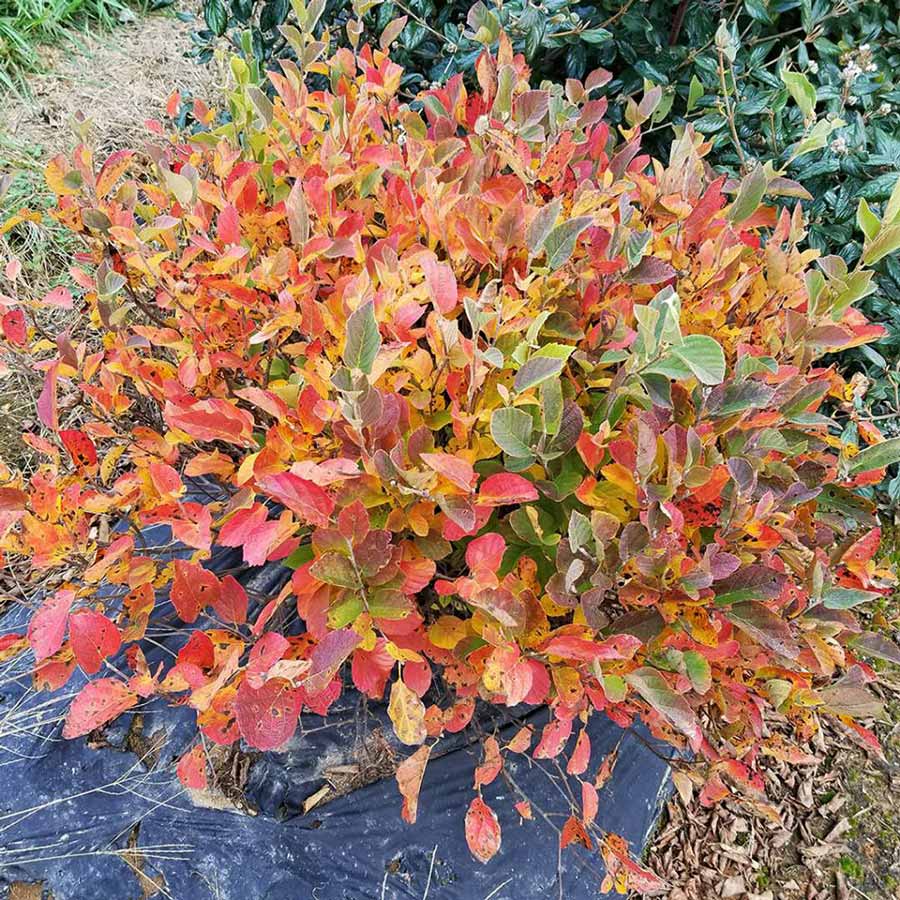
Fothergilla Legend of the Small®. Proven Winners
Nicknamed "witch alder," fothergilla produces licorice-scented, bottle-brush-shaped white flowers in early spring, and then the foliage turns brilliant shades of red, orange, and/or gold in fall.
'Blue Mist,' 'Suzanne,' and Legend of the Small® are dwarf versions that grow about three feet tall in Zones 5 through 8 or 9.
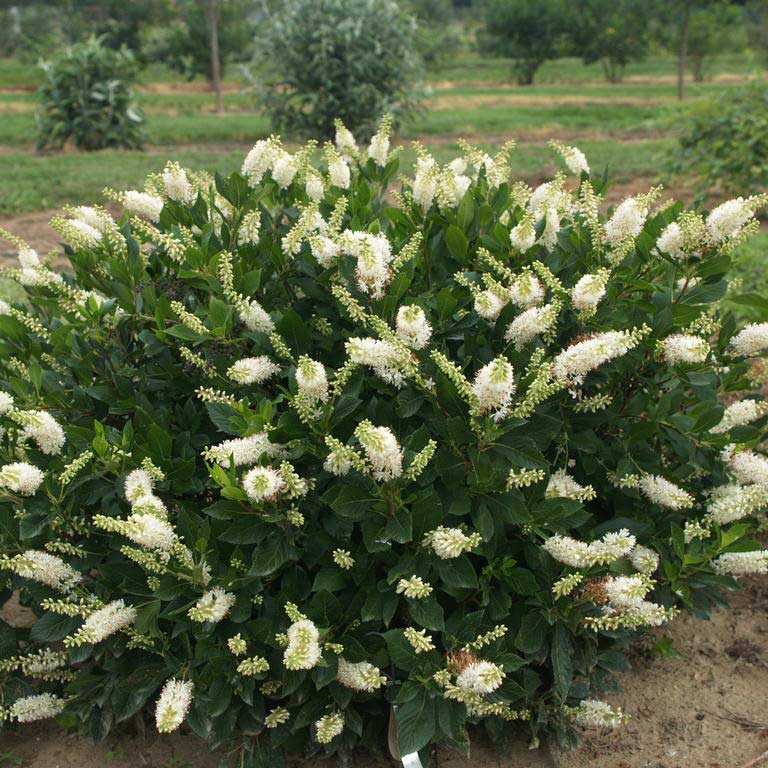
Dwarf Summersweet 'Sugartina'. Proven Winners
Summersweet or "sweet pepperbush" produces pink or white bottle-brush flowers in early summer. Its foliage turns yellow in fall.
'Hummingbird' is the best-known compact version (three feet tall instead of five), but 'Compacta,' Sugartina®, and 'Sixteen Candles' are other down-sized options.
Summersweet grows in Zones 4-9.
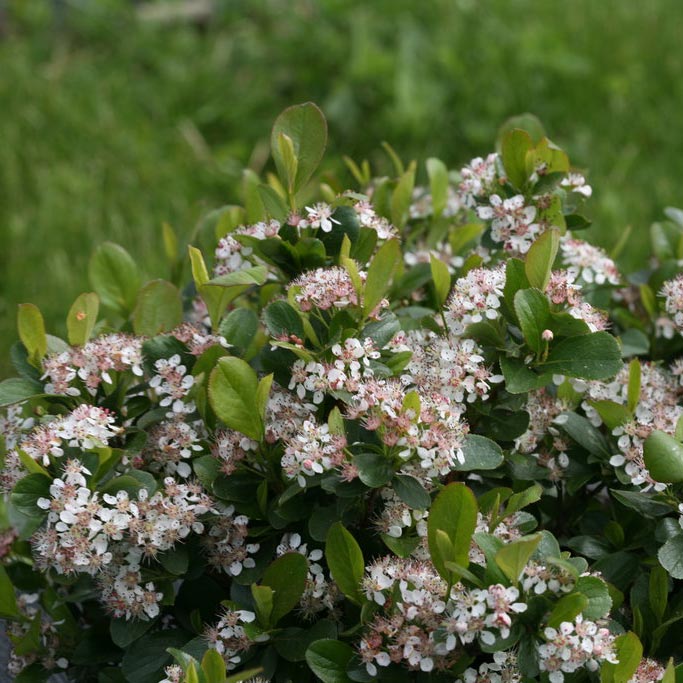
Dwarf black chokeberry (Aronia melanocarpa) Low Scape Mound®. Proven Winners
Black chokeberry produces small white flowers in spring that morph into glossy black fruits. The dark-green foliage turns reddish-purple in fall.
Iroquois Beauty™, Ground Hug® and Low Scape Mound® are compact versions that grow only two to three feet tall.
Black chokeberry is hardy in Zones 3-8.